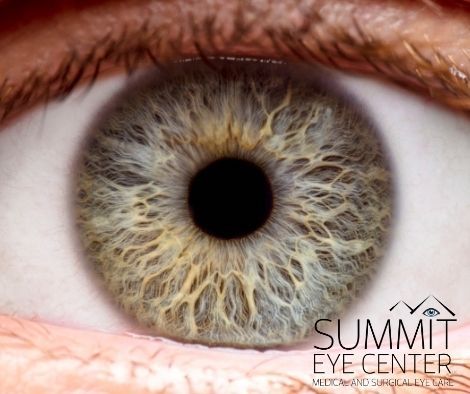
As we get older, our risk of developing an age-related eye condition significantly increases. In fact at least 1 in 3 Americans over the age of 65 have some form of an eye condition. The five most common conditions are cataracts, diabetic retinopathy, dry eye, glaucoma and macular degeneration.
These conditions often begin with no to few symptoms. Treatment and management is also most successful with early diagnosis. This is why comprehensive, dilated eye exams are recommended every year for people over the age of 60.
Cataracts
A cataract is a clouding of the natural lens within the eye. As a cataract develops, it gradually alters how light travels through the eye more and more. This results in an increase in glare and halos around streetlights and headlights at night early in the process. As the lens continues to cloud, one’s overall vision is blurred.
Cataract surgery is the only way to correct cataracts. In fact, it permanently cures a person from every developing a cataract again. This outpatient procedure can also significantly lessen one’s need for glasses depending on the lens implant used.
Diabetic Retinopathy
At least 1 in 3 diabetics over the age of 60 have some form of diabetic retinopathy. In fact, diabetic retinopathy is the leading cause of vision loss among working age Americans.
Diabetes affects the blood vessels in the back of the eye. It causes the blood vessels to become leaky and new blood vessels to grow where they should not.
Risk factors for developing diabetic retinopathy include poorly controlled blood sugar levels, high blood pressure, high cholesterol, smoking and the length of time one has had diabetes.
There is no cure for diabetic retinopathy, but there are treatments when needed that can minimize vision loss.
Dry Eye
Dry eye is by far the most common eye condition. It is more common the older we get. Symptoms of dry eye include the following: blurry or fluctuating vision, redness, tearing and feeling like there is something in the eye.
Although there is no cure for dry eye, there are numerous treatment options. The initial treatment is commonly over-the-counter artificial tears and warm compresses with lid massage. There are medication drops like Restasis, Xiidra and Cequa. Office based treatments like IPL (Intense Pulsed Light), iLux, TearCare and Lipiflow are effective in many patients. A comprehensive examination will help determine what is the best treatment for each individual patient.
Glaucoma
Glaucoma is a disease that affects the optic nerve in the back of the eye. The optic nerve is responsible for transmitting the visual information from the eye to the back of the brain where it is processed into the pictures that we see.
Early on, there are no symptoms with glaucoma. It is not until a certain level of damage has occurred that a person is symptomatic of glaucoma. Once symptomatic, those symptoms are permanent. This is another reason yearly, comprehensive eye exams are important after age 60.
There is no cure for glaucoma, but there are numerous treatment options. Medication eye drops can be used to treat glaucoma. There are also laser and surgical treatments. The doctor will determine which treatment is best based on each person’s individual situation.
Macular Degeneration
Macular degeneration is a disease that affects the central part of the retina in the back of the eye. This portion of retina is responsible for fine detailed vision such as reading and recognizing faces.
With macular degeneration, there is a disruption in the arrangement of the photoreceptors within the retina. Initially, this is the result of an accumulation of waste products within the retina that the tissue cannot clear. Eventually, atrophy or bleeding can occur.
Vitamin supplements have been shown to slow the progression of macular degeneration. For patients who develop bleeding, medicine can be injected into the back of the eye.
Although a person does not go completely blind from macular degeneration, it can greatly impact one’s vision. If a person’s vision is impaired to where they struggle with reading and other tasks, a low-vision consultation can be considered to look at special lenses and magnifying devices that can improve a person’s ability to perform certain tasks.
A common thread to each of these conditions is that early diagnosis and management leads to better outcomes. Yearly, comprehensive eye exams where the pupils are dilated are critical to this early diagnosis and management. Summit Eye Center focuses on the treatment of each of these conditions. Call 816-246-2111 or email